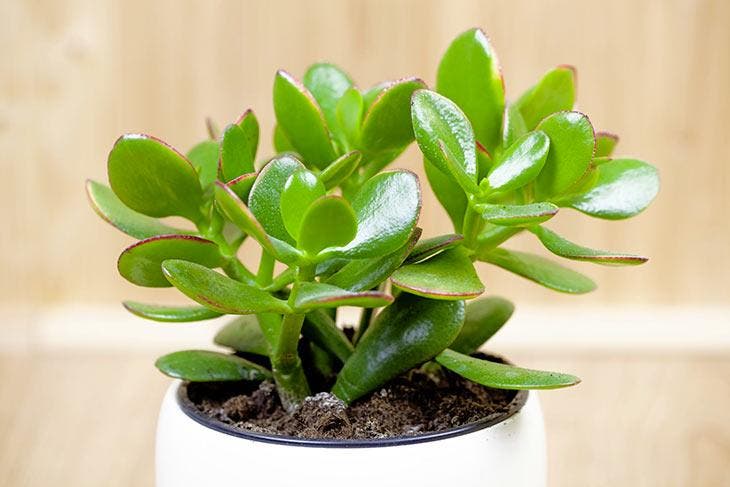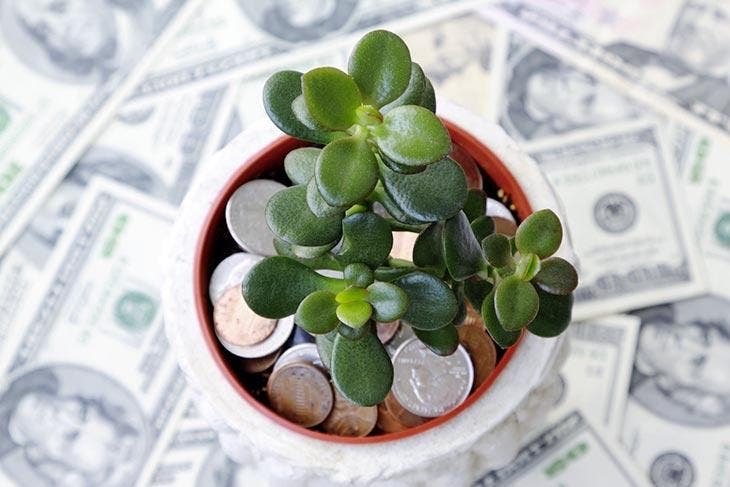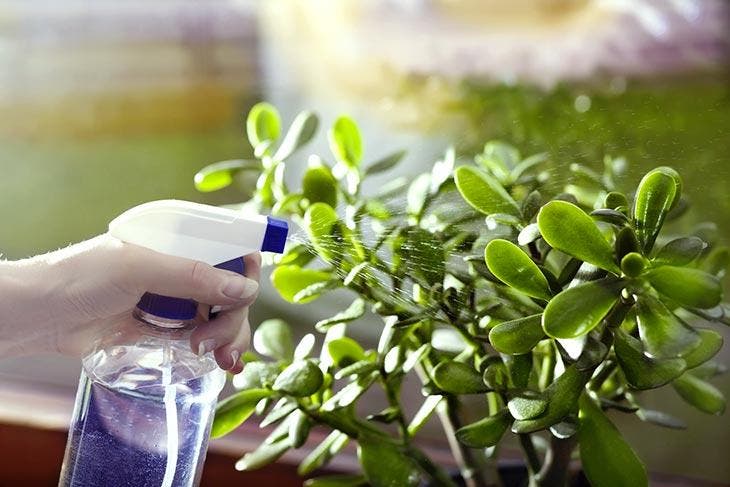

How to plant and maintain jade tree? The step by step guide
Nicknamed the money plant, the jade tree is an easy-care succulent that symbolizes luck, wealth and prosperity. Native to South Africa, this succulent plant with fleshy, oval leaves is resistant. If you take care of it, it can last for several years! To give a green touch to your interior, here’s how to plant crassula ovata and maintain it successfully, even if you don’t have a green thumb!
Do you like houseplants that are hardy and easy to grow? Jade tree might be a good choice for you! If you don’t know how to plant or maintain this succulent, we guide you in this article, step by step.
How to plant a jade tree? Grow this lucky green plant from cuttings.

Plant the stem of the crassula ovata
If you know someone who has a large jade plant, you can ask them to cut a stem to use as a cutting. It is better to take a thick stem with healthy leaves. Use clean pruning shears when cutting the stem and be sure to keep a few inches between the leaves and the bottom of the stem. This way, you won’t have to remove the leaves when you go to plant your cutting. Here are the steps to follow to plant the cutting and root it successfully.
- Allow the cut scar to air dry in a dry place until a thin scab forms at the cut site. Then you can get a healthy plant. Note that the larger the cut, the longer it will have to dry;
- Sprinkle the stem with a rooting hormone. It is a mixture of plant hormones that promote the growth of cuttings;
- Fill a pot with special soil for succulents . If you want to use your own potting soil, no problem! Just try adding a handful of sand to help with drainage. Do not use regular potting soil for the cutting, as it is too heavy for the cutting to take root. Make sure the pot contains a drainage hole to help the water drain away;
- Make a hole in the ground with a pencil or your finger;
- Place the stem in the hole, making sure the rooting hormone is covered;
- Tamp the soil around the stem;
- Place the pot in a sunny location, but not in direct sunlight. New shoots will appear after 4 weeks.
While rooting the cutting, avoid watering it. This can cause the stem to rot and kill your plant. If you want to move your crassula into a larger pot, wait until it has developed roots.
Plant crassula ovata leaf
Instead of the stem, you can also plant a crassula leaf. Here’s how you can do it.
- Take a leaf with a fragment of stem from a healthy, mature crassula. Without the stem, the cutting may not root;
- Let the cut rest in a dry, warm place until the cut dries and heals;
- Sprinkle a rooting hormone, also called rooting hormone, on the cutting. This helps the cuttings root better in the soil;
- Plant the cutting in a potting mix made of equal parts soil and perlite. It is not necessary to bury the entire cutting in potting soil;
- Place your pot in a warm, bright place;
After a few days new shoots will appear.

How to successfully care for crassula ovata?
To successfully care for houseplants, you need to take into account four parameters: water, temperature, light and fertilizers.
How do I know if my jade tree needs water?
Be careful when watering your plant. Don’t be heavy! If your plant is overwatered, its roots may rot. It is enough to water once a week. Furthermore, succulents are not greedy for water. Their fleshy leaves help store water. They can therefore resist watering omissions. In winter, limit watering to once a month. If you are watering your plant from the bottom, remember to remove excess water from the saucer.
Before watering your plant, check whether it needs water. For this, here is what you can do:
- Stick your finger into the soil. If it still feels damp, don’t water your plant. But if you feel that the soil is dry, in this case, moisturize the substrate of your crassula.
- Check the appearance of the foliage. If the leaves are swollen, it means your plant is over-watered. But if its leaves are wilted, it means that your plant lacks water and therefore needs to be watered. Choose non-limestone or filtered water. Tap water contains salts and minerals that can harm your plant.
According to gardening expert Madison Moulton , healthy leaves are green, shiny and plump. If the edges start to look wilted, it means your plant is underwater. In fact, when the soil is dry, the leaves store little water. This explains the crumpled appearance of the leaves. This lucky tree definitely grows in warm regions, but keep in mind that even though crassula doesn’t need a lot of water or frequent watering, it can’t go without water for long periods.

Where to place the lucky tree?
Crassula ovata loves light. Additionally, lack of light can retard your plant’s growth. Avoid exposing it to direct sunlight. You risk burning the foliage of your plant if it is still young. As for mature plants, they are likely to develop red tips on their leaves. The jade tree needs partial shade exposure between 4 and 6 hours a day. Place your plant in a bright spot. Furthermore, the light favors the flowering of the crassula ovata. Note that getting this succulent to flower is not easy. Only mature varieties can flower. If your crassula is still young, you will have to wait a few years before seeing small white star-shaped flowers appear.
Furthermore, the jade tree fears cold and frost. During the day it prefers a temperature between 18 and 24°C. At night the crassula tolerates a temperature between 10 and 13°C.
When should I prune my succulent plant?
Regular pruning of the jade tree is not necessary. Prune the crassula if it does not grow evenly or if it is infested with pests. Pruning can also help your plant grow vigorously. Prune your crassula in spring, before new growth appears or soon after flowering.
When to fertilize the jade tree?
The jade tree only needs to be fertilized once a year. In winter, crassula enters a dormant period. When plants are in a dormant period, their growth slows. They can therefore do without fertilizer. Plant growth resumes in spring. Said this, fertilize your plant during its vegetative growth period . This lasts from early spring to early autumn.
Should crassula be repotted?
When the jade plant grows, its roots also grow. The pot can therefore become cramped for your plant. Hence the usefulness of repotting. Furthermore, young plants should be repotted every 2 or 3 years and older plants every 4 or 5 years. To do this, it is recommended to:
- Repot the crassula in a pot slightly larger than its original pot.
- Use fresh, draining soil. You can also purchase special soil for succulents or cacti. The soil should be neutral or slightly acidic. Furthermore, it must be draining to avoid stagnation of humidity, and therefore avoid rot.
- Add perlite to the potting mix to aid drainage, or choose a clay or clay pot, to draw out excess moisture.
- Carry out repotting at the beginning of the crassula’s growth period, i.e. at the beginning of spring.
To maintain your crassula ovata for a long time, also pay attention to mealybug attacks on the foliage of your plant. It is these parasites that crassula fears the most. Mealybugs usually lodge under the leaves of the jade tree. You can remove them using a cotton ball or cloth dipped in rubbing alcohol.
Thanks to this practical guide you will be able to plant and care for the money plant. This houseplant will be able to develop healthily and also last a long time!